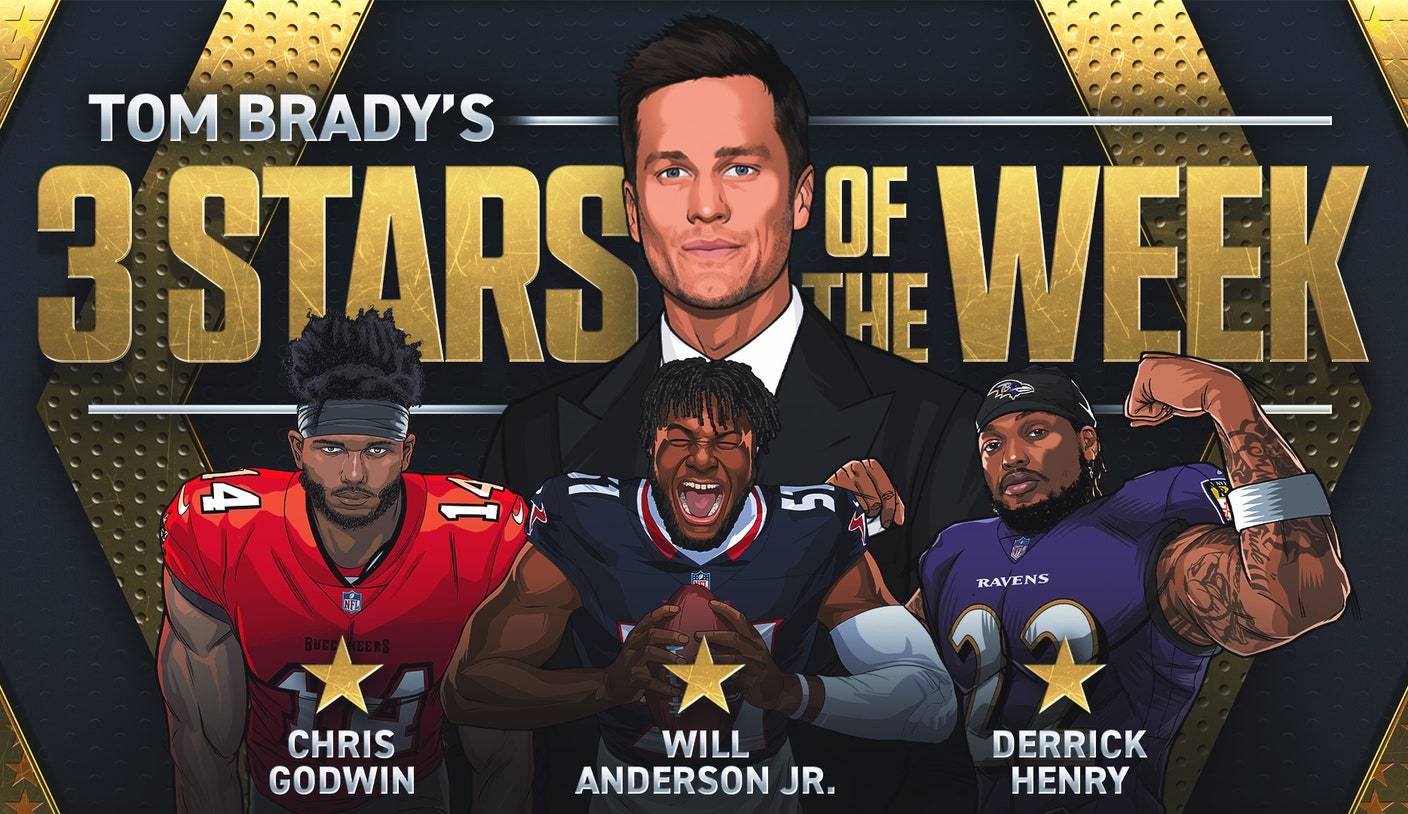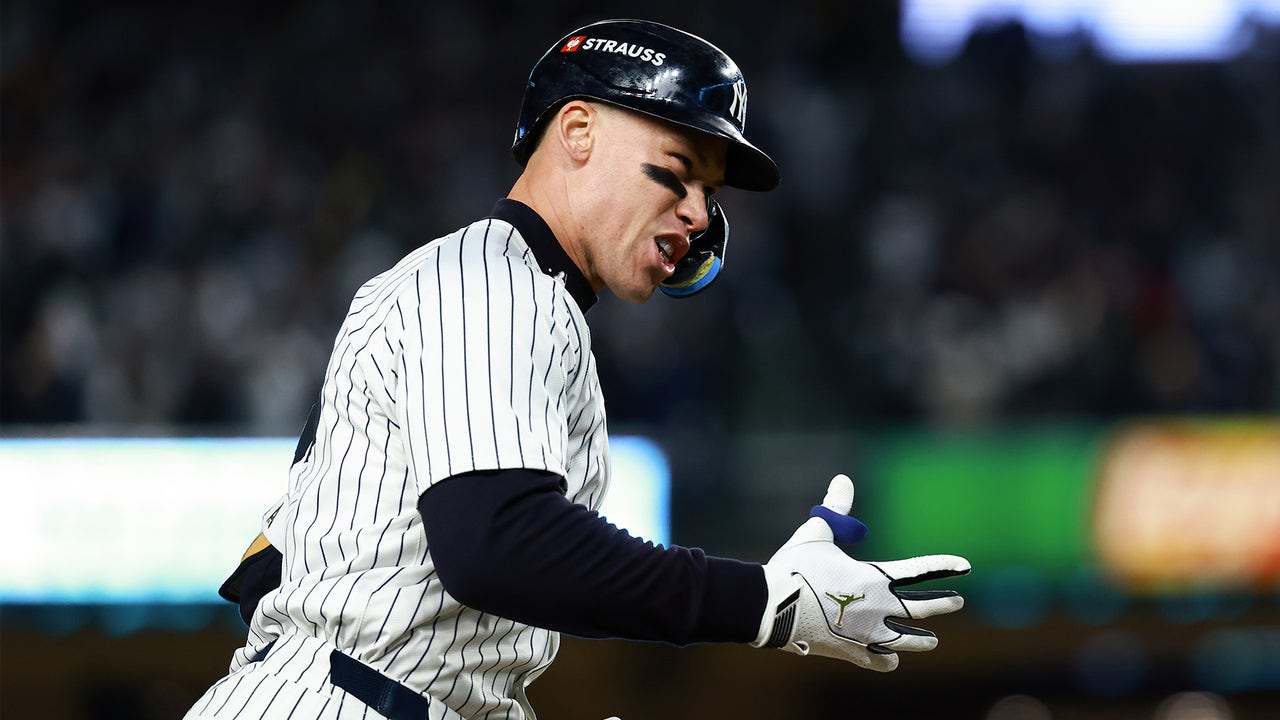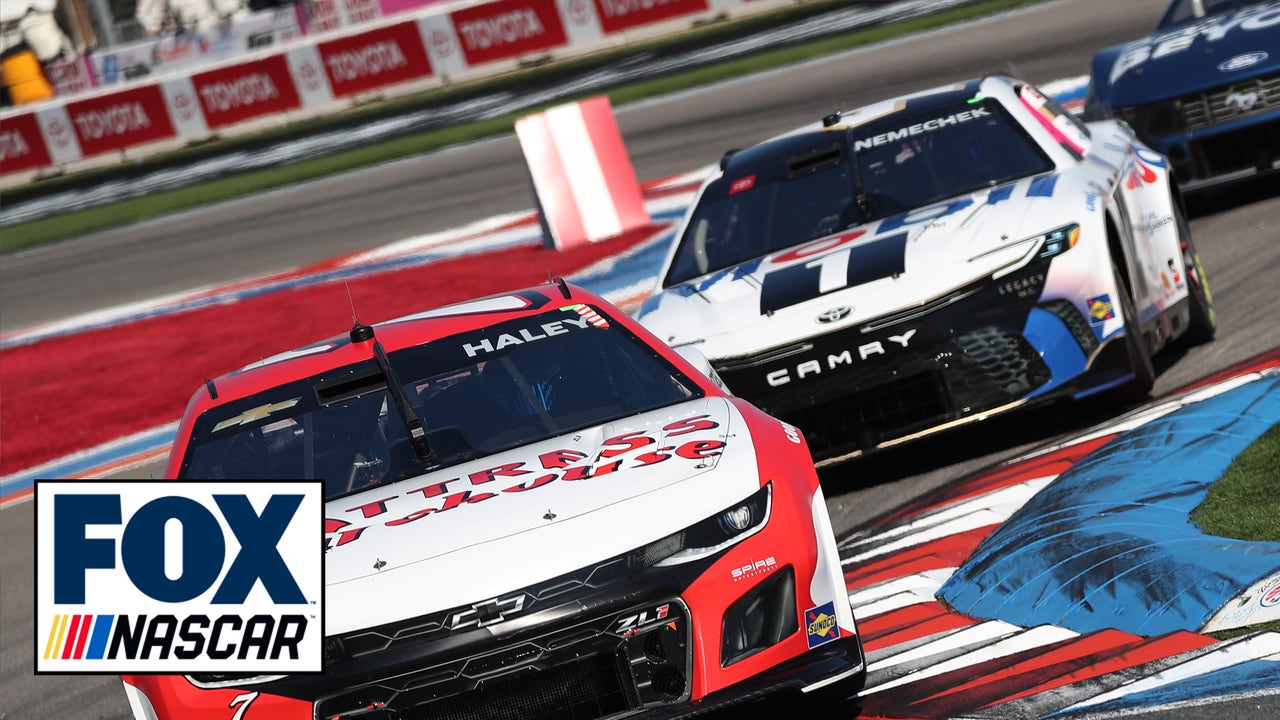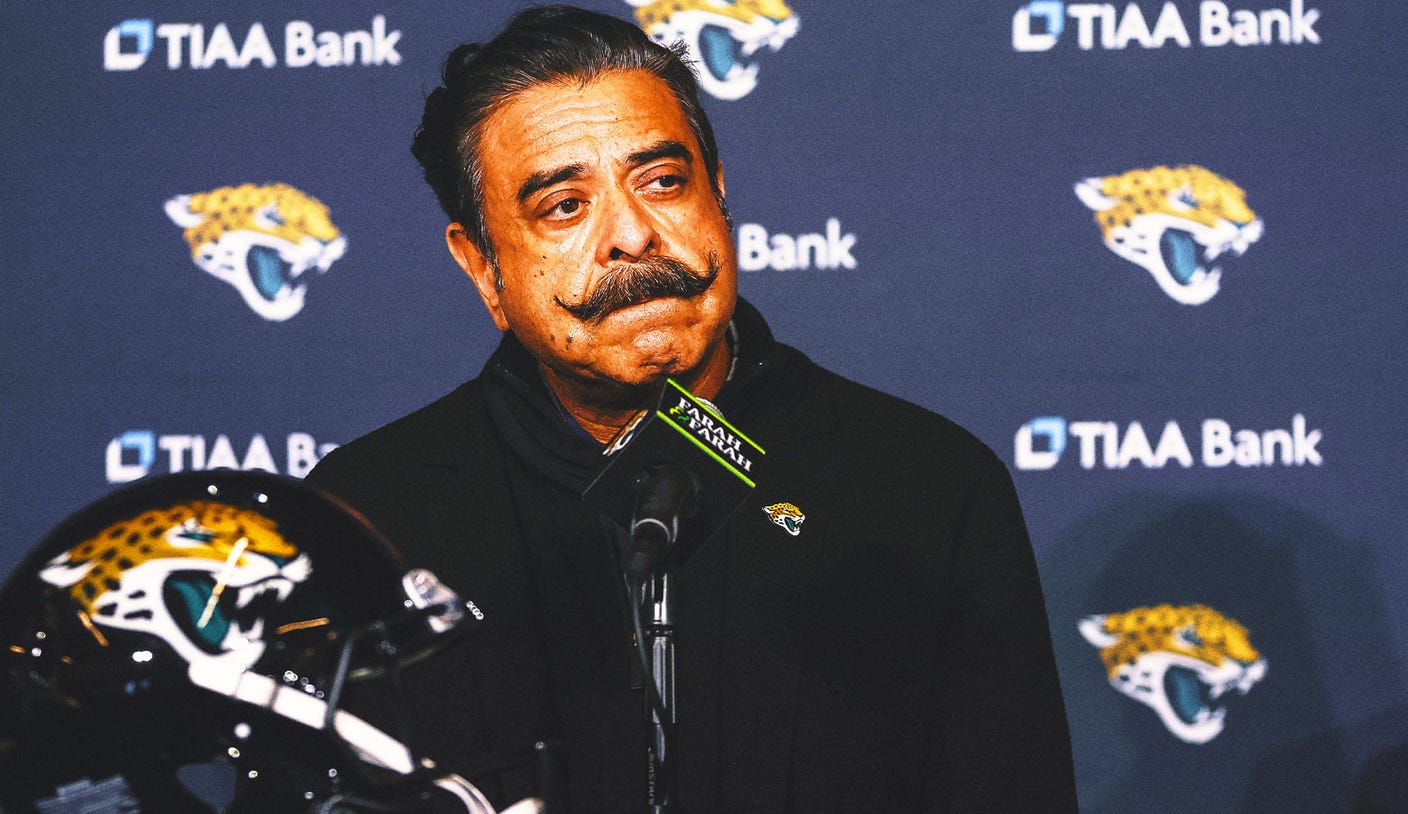[ad_1]
Just a few months after Mark Andrews cracked his left fibula and injured ankle ligaments, the Baltimore Ravens tight end was jumping a five-foot fence while lugging a generator and a Jugs machine.
It wasn’t just Andrews. His brother Charlie, a realtor, and his father Paul, a doctor, were there also.
On select weekdays and every weekend this offseason, the three of them took the field in Scottsdale, Arizona, to make sure Mark got the route work he loves so much — and, in light of the injury, so badly needed. By the time they’d hopped the fence, they had already scoped the soccer field to make sure there were no kids playing. If there were, that sent the whole thing for a loop, because it was Mark’s favorite field.
According to his family, Mark is a man of routine and few words — and he’s very particular about the kind of grass he’ll work out on.
Once they’d carried everything onto the field, Paul got the Jugs machine situated. Mark might be the metaphorical quarterback — calling the shots and structuring the workout — but Paul was in charge of delivering the ball during drills.
“He’s the quarterback,” Mark said. “He’s a sniper on that.”
Mark’s older brother might have been the most versatile man on the field. Though he hasn’t played football since high school, Charlie served as the linebacker, defensive back and backup tight end. For every route that Mark ran, Charlie ran it either as a defensive player or the offensive player second in the drill line.
The workouts were special for all of them, including Mark’s mother, Martha, who often attended.
“It’s just the fact that we’re allowed to do that with him, you know? That he shares that part of his life with us,” she told FOX Sports. “He doesn’t live here. We don’t see him for many months out of the year. And so when he is here, the fact that there are things we can do together that allows us to be a part of a football life is kind of cool.”
It’s anything but typical for an NFL player.
There is an entire economy of professional trainers who work with pro athletes. But Mark, now 28 and a six-year NFL veteran, doesn’t have one. Every offseason, he has worked with his family instead.
This offseason wasn’t like the others.
Last Nov. 16 against the Bengals in Baltimore, the three-time Pro Bowler caught a pass from Lamar Jackson and was taken down inside the 5-yard-line with a hip-drop tackle. He stayed down until trainers arrived.
“What was different this year was the unknown. We were there, sitting at the 30-yard line [when Mark was injured],” Paul said. “When you watch your son go down the field, everybody else stands up, and you sit down.”

Andrews suffered a season-ending injury on this play last November against the Bengals. The NFL has since banned hip-drop tackles. (Photo by Mark Goldman/Icon Sportswire via Getty Images)
Mark texted his family after the injury to say that it wasn’t good and that he was leaving the stadium. Paul is a urologist but knows enough about orthopedics to worry about compartment syndrome, a condition in which the pressure from the injury can cut off nourishment and oxygen to the nerves and muscles, potentially causing permanent damage.
“The first several days, all the things flash in front of you for your son in terms of their career,” Paul said. “And not just the career. It’s about something they love, and will it be taken away from them?
“And you can see that fear — that strain — that they have: ‘What’s in front of me? Will I be who I am?'”
Mark’s injury ended up being one that, if everything went according to plan, would result in a 100 percent recovery. “But you don’t believe it,” Paul said. There’s always uncertainty around injuries, even with former and current NFL players calling Mark to reassure him he’d be OK. And even when Paul walked down the hall to chat with the orthopedic surgeons who practice at the Mayo Clinic in Scottsdale and reassured him that Mark would be fine.
That first workout session brought extra anticipation for the Andrews family. Paul and Charlie watched Mark closely through warmups to see how he was moving. There were nerves. But as Mark made his cuts and settled into his routine, his father finally felt some relief.
“Seeing that Mark was Mark,” Paul said. “That he was fast, he was quick, he could actually jump up and go get a ball. And then seeing him come down on his legs and say, ‘He’s fine. He looks great.'”
It was back to work. Business as usual.
If anything, there was greater intensity in this offseason’s workouts. Mark typically took a month off to rest after the season. But not this year.
“I’ve always worked hard, but I’ve really dialed in,” Mark said. “Obviously, dealing with the ankle was something that I had to focus on. Sometimes something like that is a blessing in disguise. You don’t really know what’s around the corner, but having to go through that adversity has allowed me to really put the work in and see things for what they are. I think I’ve come out better for it.”
At the beginning of each workout, after Mark did his warmups and physical therapy exercises, the family took their places. Mark would work through his route tree with Charlie while Paul fired off the footballs. Paul’s job was uniquely challenging because Mark can be a tough man to please. The ball-placement had to be just right or Mark would let his dad know. At times, it had to be just wrong. Jugs machines are just that: machines. Mark wanted to make sure that Paul simulated human inconsistencies as they worked through routes.
“He’s very particular about what he wants and where the ball is going to be,” Paul said. “And after having done this a lot over the last six years, I know where to put the ball for him. I know where the ball comes out of the machine. I know what speed we need it for, what depth for it to come out. And I know how fast he wants to run the next route or catch the next ball. And so a lot of it is unspoken communication from having done this over and over and over again.”
Meanwhile, Charlie did what he could to make it through every practice. He left just about every session with a new bruise. For the first half, Charlie would run routes behind Mark. For the second half, Charlie worked as the defender.
One thing was consistent: Charlie was running. A lot.
Charlie is 6-foot-4 and 250 pounds — roughly the same size as Mark. But of course, he’s not a pro athlete.
“It’s humbling in many ways,” Charlie said. “And I think if a lot of people who watch football went out there and just stood in front of him, they would have a lot more respect for the game.”
Little brother rarely said anything to older brother during the workouts. There was, however, the occasional criticism of Charlie’s technique.
“Why didn’t you open up that way?” Mark would ask.
“Well, I don’t know. I don’t play football for a living,” Charlie would reply. “I’m just trying to imitate you.”
Once the session was underway, there was no bowing out. This summer, Charlie hurt his hamstring — probably just overuse — and he tried to sit out.
Not happening.
“Mark is of the mindset that you don’t sit out. You play through the pain. Even with all that, he made me finish the day regardless of the pain that I was in,” Charlie said with a laugh.
Mark occasionally took over the Jugs machine and made his dad and brother run the routes. The long balls, in particular, were so difficult for them to track that it typically ended in hilarity. And then they were onto the final element of the session: conditioning. When they were running gassers, Mark and Charlie gave their dad a headstart and then tried to run him down. But Mark made sure it was tough on everyone, including himself.
“You’re just trying to survive at that point. Doesn’t matter who you are. You’re just trying to survive,” Charlie said. “He’s having more fun in the conditioning because he knows he’s hurting us.”
It was only when Mark’s niece and nephew took the field that the All-Pro tight end cracked. That’s when he became Uncle Mark. They would chase him around the field.
And — maybe just maybe — Mark Andrews would smile.
“It just lightens it up. Mark is very serious. It’s still work, but it kind of changes the dynamics,” Charlie said.
When the sessions ended, the group would huddle up to cool down. That was when the stories started to come out — stories that neither Paul nor Charlie would divulge to me. They got the inside scoop about what was happening in the Ravens’ meeting rooms, locker room and practice field. Most importantly, they learned what was really happening in Mark’s life when he was in-season. It’s not easy to stay in touch with someone as consumed as an NFL player is during the season. The Andrews family doesn’t get much from him from July to February. So these sessions burned like a campfire, the perfect space for family time.
These practices kept them connected. Charlie and Mark lived together for Mark’s first few years in the NFL. But they now have very different and separate lives. The same is true of Mark and his parents.
“To be a part of this moment in his life is very cool. To look back and say I helped him,” Charlie said. “That’s a pretty cool thing.”
It has been a painful year for Mark Andrews, but he repeatedly credits his family for keeping him on track in his recovery.
“The only way to get better at football is to play football,” Mark said.
And Mark spent the offseason on a field in Scottsdale, playing football with his family.
Prior to joining FOX Sports as the AFC East reporter, Henry McKenna spent seven years covering the Patriots for USA TODAY Sports Media Group and Boston Globe Media. Follow him on Twitter at @henrycmckenna.
[Want great stories delivered right to your inbox? Create or log in to your FOX Sports account, follow leagues, teams and players to receive a personalized newsletter daily.]

Get more from National Football League Follow your favorites to get information about games, news and more
[ad_2]
Source link











